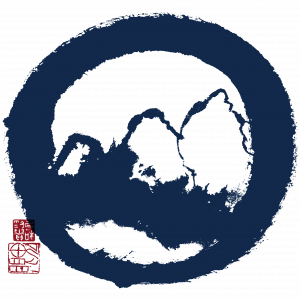Supreme Ultimate Boxing
live your life with truth and righteousness."
when still, be still as a mountain."
This is a change—real and ongoing."
Tai Chi Chuan
A Chinese martial art characterized by its harmonious sequence of fluid movements, Tai Chi practice harmonizes movement, breath and awareness to promote vitality, clear focus, depth of spirit and martial ability.

Tai Chi Promotes
- • Balance & Flexibility
- • Internal Strength
- • Serenity of Mind
- • Clarity of Action
- • Relaxation
- • Fluidity of Movement

Tai Chi Chuan Principles
Tai Chi Chuan, “Supreme Ultimate Principle Boxing”, is a Chinese Martial discipline based on the principle expressed through the yin/yang symbol—known in Chinese as tai chi da. The tai chi principle is an ancient Chinese philosophical construct referred to in texts such as the I Ching and Tao Te Ching, that recognizes the innate unity of opposites, such as up/down, inside/outside, male/female, light/dark, etc. An old Chinese origin story says that in the beginning was wuchi (emptiness) from which arose tai chi (the “mother” of yin and yang) followed by the separation and interaction of yin and yang, creating the “10,000 things,” or all perceived phenomena. Tai Chi Chuan is therefore a martial discipline that embodies in its practice the philosophy expressed in the yin/yang symbol and seeks balance within changing circumstances.
Yoking our attention to the subtle movements of the form, while quieting our thoughts and opening our senses, is fundamental to our discipline. In our school we practice three variations of the Yang-style form: a 54 movement short form, a 108 movement long form and a saber form (Tai Chi Dao). We also incorporate partner exercises into our training, primarily Push Hands. Martial applications are demonstrated to create context for deeper understanding of the movements.



Tai Chi Chuan History & Lineage
The origins of Tai Chi Chuan are shrouded in myth, attributed to the Taoist immortal Chang San-fang, who, having seen a fight between a snake and crane, was inspired to create its earliest form. The oldest of the modern “styles” of Tai Chi is the Chen-style, dating back to the 17th century. The Yang-style was developed in the mid 19th century by Yang Luchan, after 18 years of study of the Chen-style, which he then transmitted to his sons and his grandson Yang Chen-fu. The forms taught at Siskiyou Aikikai are descendent from those developed by Yang Chen-fu.
Choy Hok Pang, a direct student of Yang Chen-fu, introduced tai chi chuan in the United States beginning in 1939, in San Francisco, Los Angeles and New York. Choy Hok Pang’s son Choy Kam Man (1919-1993) began his tai chi chuan training with his father at the age of 14. Choy Kam Man emigrated to San Francisco with his family in 1959 where he taught tai chi openly (instead of limiting instruction to the Chinese American community) until his death in 1993. Darrell Bluhm began studying with Sifu Choy in 1971 at UC Santa Cruz. He continued to attend group and private lessons in San Francisco with Sifu Choy until 1993. He received his teaching certificate from Choy Kam Man’s Tai Chi Chuan Academy of San Francisco in 1989, although verbal permission had been granted to begin teaching in 1983, when Bluhm opened Siskiyou Aikikai.
While Sifu Darrell Bluhm has studied with several other tai chi chuan teachers, the forms and practices taught at Siskiyou Aikikai are derived from those taught by Choy Kam Man. In keeping with his teacher’s approach, Bluhm emphasizes the meditative aspects and health benefits of tai chi practice, and the five qualities of movement: slow, relaxed, soft, sinking and continuous, characteristic of traditional Yang style practice. The Tai Chi Chuan partner practice of “push hands,” and the martial applications embedded in the forms, were included in his study with Sifu Choy and remain an important component to Bluhm’s teaching.

Master Choy Kam Man

Chief Instructor Darrell Bluhm

